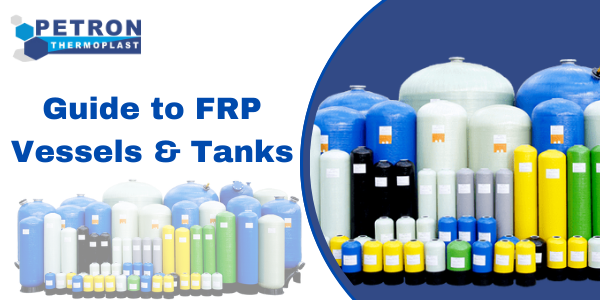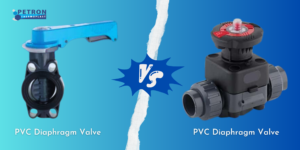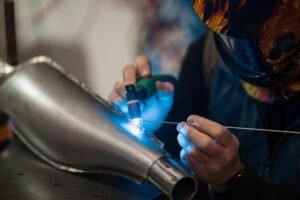Fiber Reinforced Plastic (FRP) vessels and tanks have emerged as indispensable components across various industries due to their exceptional durability, corrosion resistance, and versatility. In this comprehensive guide, we delve into the intricacies of FRP vessels and tanks, exploring their construction, applications, benefits, and considerations.
Introduction to FRP Vessels & Tanks
FRP Tank Manufacturer entities play a pivotal role in supplying industries with high-quality vessels and tanks engineered from composite materials. These manufacturers utilize advanced techniques to craft FRP products that meet stringent standards and cater to diverse operational requirements.
Click Here to know more technical details about frp tank manufacturer.
Understanding FRP Construction
FRP vessels and tanks are crafted using a combination of reinforced fibers, typically glass, carbon, or aramid, embedded in a polymer matrix, commonly epoxy, vinyl ester, or polyester resin. This composite structure imbues FRP products with remarkable strength-to-weight ratios and resistance to corrosion, chemicals, and extreme temperatures.
Applications Across Industries
The versatility of FRP vessels and tanks renders them indispensable across a spectrum of industries, including:
- Chemical Processing: FRP tanks excel in storing corrosive chemicals safely, mitigating the risk of leaks or contamination.
- Water Treatment: Municipalities and industrial facilities rely on FRP vessels for water purification, desalination, and wastewater treatment processes.
- Oil & Gas: FRP tanks withstand harsh environments encountered in oil refineries, offshore platforms, and pipelines, ensuring the integrity of storage and transportation systems.
- Food & Beverage: Compliance with food safety regulations and resistance to corrosion make FRP vessels ideal for storing and processing consumables.
- Aquaculture: FRP tanks facilitate the cultivation of aquatic organisms by providing a durable and hygienic environment.
Benefits of FRP Vessels & Tanks
Corrosion Resistance
FRP’s innate resistance to corrosion ensures longevity and reliability, even in aggressive chemical environments. Unlike metallic alternatives, FRP vessels and tanks remain unaffected by acidic or alkaline substances, minimizing maintenance costs and downtime.
Lightweight Construction
The lightweight nature of FRP facilitates easy installation, transportation, and maneuverability, reducing logistical complexities and construction expenses. Despite their reduced weight, FRP vessels exhibit exceptional structural integrity, surpassing traditional materials in strength and durability.
Design Flexibility
FRP Tank Manufacturer entities offer bespoke solutions tailored to specific applications, encompassing various shapes, sizes, and configurations. This design flexibility enables seamless integration into existing infrastructure while optimizing space utilization and operational efficiency.
Thermal Insulation Properties
FRP vessels exhibit superior thermal insulation properties compared to metallic counterparts, maintaining consistent temperatures and minimizing energy consumption. This characteristic is particularly advantageous in processes requiring precise temperature control or thermal stability.
Environmental Sustainability
The eco-friendly nature of FRP materials aligns with sustainable initiatives, as they are non-toxic, recyclable, and emit minimal volatile organic compounds (VOCs). Furthermore, the extended lifespan of FRP vessels reduces the need for frequent replacements, thereby conserving resources and mitigating waste generation.
Considerations for Selecting FRP Vessels & Tanks
Material Selection
When choosing an FRP Tank Manufacturer, consider the compatibility of the resin matrix with the intended application. Epoxy resins offer superior chemical resistance, while vinyl ester resins enhance resistance to acidic environments. Polyester resins provide a cost-effective solution for less demanding applications.
Reinforcement Configuration
The orientation and composition of reinforced fibers significantly influence the mechanical properties of FRP vessels. Fiber architectures such as unidirectional, bidirectional, or multidirectional reinforcements cater to specific loading conditions, optimizing strength and stiffness while minimizing material wastage.
Quality Assurance Standards
Ensure that the FRP Tank Manufacturer adheres to stringent quality assurance protocols and industry standards throughout the manufacturing process. Certification bodies such as ASTM International, ASME, and ISO provide benchmarks for evaluating product quality, performance, and compliance with regulatory requirements.
Installation and Maintenance Considerations
Consult with the manufacturer to assess installation requirements and maintenance protocols to maximize the lifespan and performance of FRP vessels and tanks. Proper handling, periodic inspections, and routine maintenance routines are imperative to mitigate potential risks and ensure operational reliability.
Emerging Trends and Innovations in FRP Technology
As industries evolve and demand for advanced materials grows, the field of FRP technology continues to witness innovation and development. Several emerging trends and advancements are reshaping the landscape of FRP vessels and tanks:
Nanocomposite Reinforcements
The integration of nanomaterials such as carbon nanotubes, graphene, and nanoclays into FRP matrices enhances mechanical properties, thermal conductivity, and barrier properties. Nanocomposite reinforcements offer unprecedented strength-to-weight ratios and multifunctional capabilities, opening new avenues for lightweight and high-performance FRP applications.
Additive Manufacturing (3D Printing)
Additive manufacturing techniques enable the rapid prototyping and production of complex geometries with minimal material wastage. The advent of 3D printing in FRP fabrication facilitates the customization of vessels and tanks according to specific design requirements, fostering innovation in product development and accelerating time-to-market.
Smart FRP Systems
Integration of sensors, actuators, and IoT (Internet of Things) technologies into FRP vessels and tanks enables real-time monitoring of structural integrity, performance parameters, and environmental conditions. Smart FRP systems offer predictive maintenance capabilities, optimizing asset management strategies and enhancing operational efficiency while ensuring safety and compliance.
Bio-based Resins
The shift towards sustainable and renewable resources has spurred interest in bio-based resins derived from plant-based feedstocks such as soybean oil, corn starch, and lignin. Bio-based resins offer comparable mechanical properties to traditional petrochemical-based resins while reducing reliance on fossil fuels and mitigating carbon footprint, aligning with circular economy principles and green procurement strategies.
Advanced Surface Coatings
Innovations in surface coating technologies enhance the chemical resistance, abrasion resistance, and anti-fouling properties of FRP vessels and tanks. Nanostructured coatings, hybrid polymer coatings, and self-healing coatings provide added protection against corrosion, biofouling, and environmental degradation, prolonging service life and reducing lifecycle costs.
Conclusion
As industries navigate evolving regulatory landscapes, technological disruptions, and sustainability imperatives, the adoption of FRP vessels and tanks emerges as a strategic imperative for ensuring operational resilience, cost-effectiveness, and environmental stewardship. By harnessing the inherent advantages of FRP technology and embracing ongoing innovations, stakeholders can forge a path towards a future characterized by sustainable growth, resource efficiency, and technological excellence. Together, we can propel the FRP industry towards new frontiers of innovation, driving progress and prosperity for generations to come.




